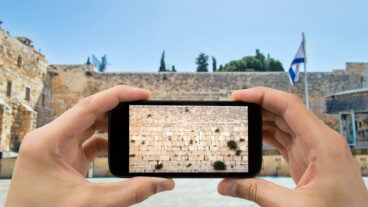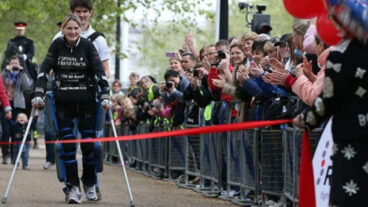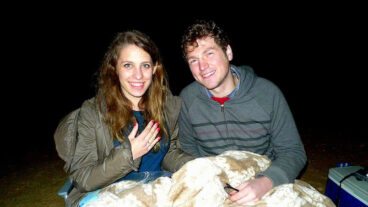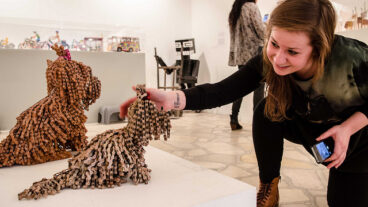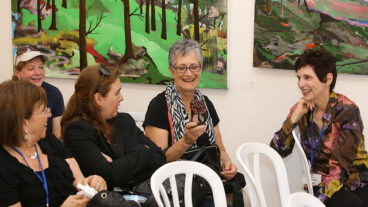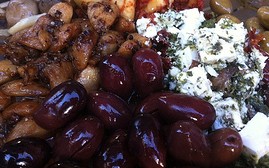Over the years, Haifa has blossomed into an enchanting metropolis, home to a multitude of faiths and nationalities.Haifa has always had a special place in my heart. It was there, decades ago as a teenage immigrant that I found my first job, in the PR department of the now defunct Israel Maritime Fruit Carriers, after completing a kibbutz ulpan.
In the early morning haze, I would board the bus at the top of the Carmel in Naveh Sha’anan, where I shared an apartment with other post-ulpan girlfriends, and marvel at the beauty of the view as we wound our way through the various neighborhoods on our way to the port area below. No one, I wrote my parents in an ardent letter back home, gets a view like that on their way to work in London.
But if I removed my rose-colored glasses, all was not perfect in Haifa of the 1970s. The view from high above was beautiful, but up close the port area was dingy, the shops of the lower Hadar were not much brighter, and it was only when you traveled up to the Ahuza neighborhood with its posh residential area with parks, offices, shops and hotels for the well heeled that you saw the real beauty of Haifa.
But over the years, Haifa has blossomed into an enchanting metropolis, home to a multitude of faiths and nationalities. The once dismal port area has now become an attractive industrial area with a growing high-tech center. Upscale office buildings nudge magnificent museums, and highways and overpasses modulate the commuter and tourist traffic.
As a port, it’s only natural that many of Haifa’s sites and museums are connected to Israel’s maritime past. For example, the Clandestine Immigration and Naval Museum is built around the renovated remains of the illegal immigrant ship the Af Al Pi Chen (“Despite Everything”). The museum tells the riveting story of the intrepid captains, crew and refugees from blood-soaked Europe who risked their lives to run the British naval blockade and try to land on the shores of Palestine.
One of the films at the museum tells the story of life in the camps in Cyprus. From there you move on to the naval history part of the museum. The large outdoor expanse has sections from landmark sea vessels, including Israel’s first missile launcher, and the deck of a boat captured from the Egyptians. Israel has never glossed over its tragedies and failures, and it is fitting that both the entrance and farthest point of the display are devoted to Israel’s submarine history.
As you approach the museum, a section of the towering bridge of the ill-fated Dakar submarine rises before you. This is the only part of the vessel that was retrieved 30 years after disappearing on its maiden voyage in 1968.
At the farthest point of the museum is an intact submarine the INS (Israel Naval Ship) Gal, which was placed in the museum less than a year ago. As I ducked my head and walked through the narrow aisle, I realized what space economy means. Every nook and cranny has a purpose.
Down the road, we delved deeper into the past at the National Maritime Museum, which houses marine archeological finds. One of the most exciting discoveries was a 2,000-year-old battering ram from a Greek warship that had been found off the shore of Atlit in the 1980s. There are also Egyptian burial barges and many statues of Poseidon, the god of the sea. The icons were thrown overboard when there was a storm in an attempt to appease the gods and calm the sea.
Just across the road, you enter the biblical era. The prophet Elijah is sacred to all the local religions, and each one claims to house the cave where he stopped to pray on his way to challenge and ultimately kill the false prophets of Baal. The Stella Maris Carmelite convent higher up the hill has its cave just beneath the altar. Lower down there is a cave where Jews often gather to recite the afternoon Minha prayer.
Another spot associated with Elijah is the Muhraka (fire) high up in the Carmel Forest, said to be the spot where Elijah challenged the priests of Baal.
A visit to a port is not complete without enjoying a sail around the harbor. The Carmelit takes visitors for a short ride around the port, just enough time to enjoy a packed lunch or the light refreshments served on board.
Later on, the children in our group had great fun at the National Museum of Science and Technology, housed in the magnificent old Technion building. In the various interactive rooms, they learned about mirrors and reflections, the eclipse of the sun, ancient and modern computers, as well as many other scientific oddities that I wished had been explained to me so clearly when I was at school.
The Railway Museum, in the port area, is another specialty museum. One of the things that makes this museum so special is that it is built around the old Haifa East railway station. There are several brightly painted old locomotives on display, including the last steam engine that operated in Israel. And you can look inside the VIP carriages that transported important visitors from their boat inland, which look more like a hotel on rails.
Another “trip” in itself is the Castra Mall, at the southern entrance to Haifa. Never before had anyone thought to combine supermarket shopping and lunch with museums and culture. Built on the site of the ancient city of Castra, the mall has an Archeology Museum with finds from the on-site digs, as well as Magda Watt’s Doll Museum, depicting scenes from the Bible and modern Israeli history.
What’s more, we watched in fascination as a talented glass blower formed animals and flowers through the heat of melted glass, while in another corner of the mall a woman was making papier-mâché dolls. One of the main indoor highlights is the Castra Art Gallery with regularly changing exhibitions. If you visit the mall, be sure to step outside onto the wrap-around terrace and look at the 24 biblical scenes painted on ceramic tiles which cover the domed roof. Definitely a mall with a difference.
Reprinted by courtesy of The Jerusalem Post.





